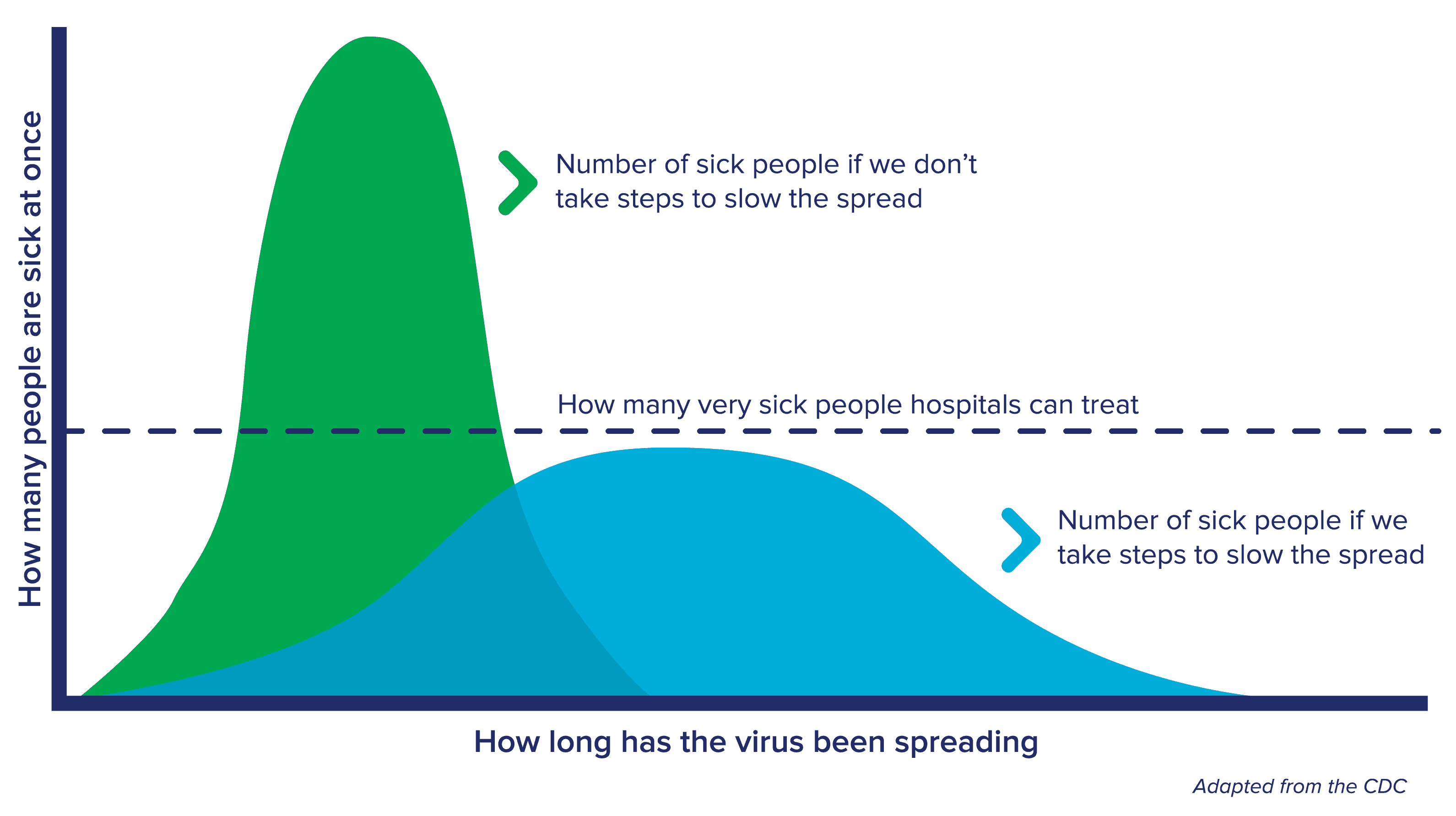By Dr. Amanda Novack, Medical Director of Infection Prevention, Baptist Health

You’ve heard by now that the coronavirus, or COVID-19, is in Arkansas.
As an infectious disease physician responsible for directing Baptist Health’s response to the coronavirus, COVID-19, I want to remind you to remain calm.
However, the reality is that this is not business as usual and we do not need to pretend like it is.
You may have seen the above graphic in the last day or so. It’s what we are referring to as “flattening the curve.” Looking at the chart, there are two curves that represent infections.
While shaped differently, the two curves actually represent the same amount of infections. While the striped curve carries a longer period of time in which a virus, such as COVID-19, exists, it also reduces the number of cases at any point in time.
The key to reducing the number of cases is to allow doctors, hospitals, government officials and vaccine manufacturers to function as best they can without being overwhelmed. Specifically in regard to hospitals, there are only a finite number of rooms, doctors and space.
Recently, the Centers for Disease Control and Prevention (CDC) chart was updated with one important aspect.
The one that shows a dotted line above the smaller curve. It represents the capacity of the healthcare system.
By preventing the spread of coronavirus, it keeps the amount of infections within the range that allows healthcare providers to treat people.
Looking at the picture, you can see that even if you don’t reduce total cases, slowing down the rate of an epidemic can be critical.
This graph is changing minds, and by changing minds, it is saving lives.
Diseases like coronavirus spread through person-to-person contact. Flu vaccines can reduce the risk of a person contracting the illness by 45 percent. There is no vaccine for the coronavirus, meaning far more people are vulnerable to COVID-19, which increases the opportunity for it to spread.
The more people present in a small area, the greater the risk to spread. The faster the virus spreads the more likely infection totals will mirror the larger curve compared to the smaller curve.
The best ways for someone to protect themselves:
- Avoid close contact with people
- Wash your hands often with soap and warm water
- Avoid touching your eyes, nose and mouth
- Cover all coughs and sneezes
- Clean and disinfect frequently touched objects and surfaces
This may get worse before it gets better, but you can do your part to help “flatten the curve.”

